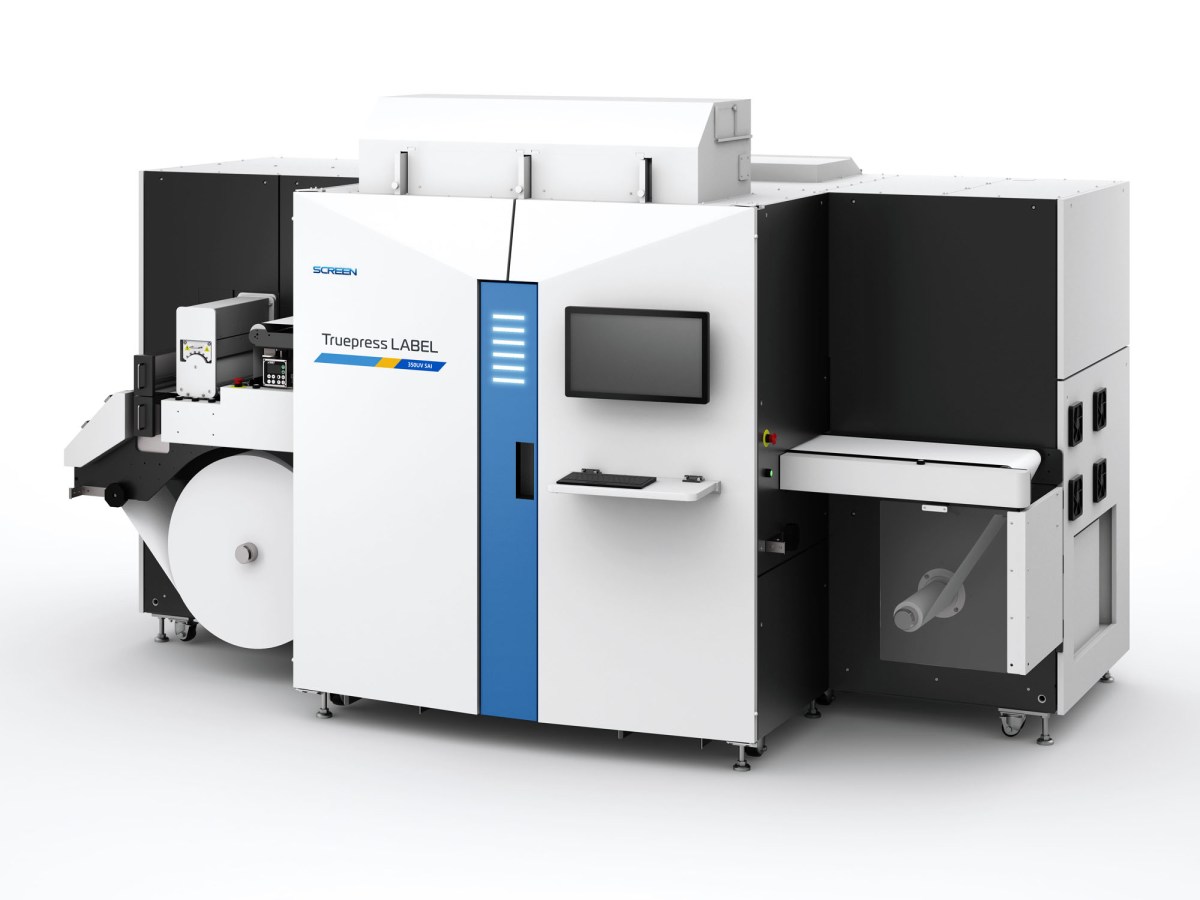At drupa 2024, Screen has announced an inline digital primer option for its Truepress L350UV SAI S inkjet label press.
The company says its digital primer option, developed for the L350UV SAI S, provides printers with the ability to improve adhesion, graininess and other characteristics. This option uses the extra head space in the L350UV SAI S to install an inline inkjet primer unit without requiring additional installation space and additional main UV lamps.
The primer unit can automatically generate a primer layer based on print data. This ability to use the primer without additional work maximises the superior usability of digital printing.
In addition, the ink itself can be a near-transparent colour. In some cases, you can use it like varnish, making it more decorative and a means of adding value. In this way, you can use the inline primer unit to expand the range of materials and applications for digital printing, increase the digital printing processes, and add value. This creates further cost advantages and contributes to the system’s environmental friendliness by reducing waste and power consumption.
Screen says this elevates the L350UV SAI S, already the best-selling inkjet press in the ANZ region, to a new level. It provides printers with the ability to enter new markets, previously outside of inkjet’s area of competence. In the ANZ market, this will enable strong entry into a series of substantial print sectors including the wine and spirits segment, where uncoated papers have long presented a challenge for inkjet, as they are for flexo.
Digital primer option heads to the region
Jet Technologies which distributes Screen in the ANZ region, will install a new L350UV SAI S with the digital primer option in its Sydney Technology Centre in June and July. The company will also install its Jet IQ finishing solution, complete with Versatex Print Bar. The company calls the combination of the L350UV SAI S and the Jet IQ finishing solution an exciting proposition for those looking for new ways to innovate in the wine and spirit segment, as well as the broader labels an packaging market.
Screen says the packaging industry sees a wide, and growing, variety of substrates used in different regions and for different jobs. It adds that, compared to other digital methods, UV inkjet printing is more suitable for wide substrates and is more durable, and its popularity has increased based on these advantages.
However, compared to conventional printing with its wide range of ink types, UV inkjet printing may not produce satisfactory results on some special substrates, with the potential for low-dyne synthetics or porous paper stocks to produce unsatisfactory results with regards to adhesion, wettability/ink density or potential bleed. This is why Screen has introduced the digital primer option.


